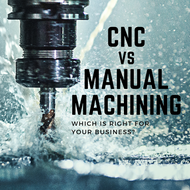CNC Machining vs Manual Machining: Which Is Right for Your Business?
Published by Kortney on May 8th 2023
When it comes to manufacturing, there are two main methods of machining: CNC machining and manual machining. While both approaches can produce high-quality parts, they differ in terms of efficiency, accuracy, and cost. In this article, we'll explore the pros and cons of each method to help you decide which is right for your business.
CNC Machining
CNC (Computer Numerical Control) machining is a highly automated process that uses computer software to control the movement of cutting tools. CNC machines can produce parts with high precision and consistency, making them ideal for large-scale production runs. They can also perform complex operations that would be difficult or impossible with manual machines.
One of the biggest advantages of CNC machining is speed. Because the machines are automated, they can produce parts much faster than manual machines. This makes CNC machining a great choice for high-volume production runs where time is a critical factor.
Another benefit of CNC machining is its accuracy. The computer software used to control the machines ensures that each part is produced to exact specifications, with minimal variation. This is particularly important in industries where precision is essential, such as aerospace, medical, and automotive.
However, there are also some downsides to CNC machining. The machines themselves are expensive, and the software required to run them can be complex and costly. This means that CNC machining may not be the best choice for small businesses or one-off production runs.
Manual Machining
Manual machining, on the other hand, is a traditional method that relies on the skill and expertise of machinists to produce parts. While it can be slower and less precise than CNC machining, it can still produce high-quality parts with the right tools and techniques.
One of the biggest advantages of manual machining is its flexibility. Because machinists are in control of the machines, they can make adjustments and modifications on the fly, without the need for complex software or programming. This makes manual machining a great choice for small businesses or custom production runs, where flexibility and customization are key.
Another benefit of manual machining is its lower cost. Because the machines are simpler and less automated than CNC machines, they are generally less expensive to operate and maintain. This makes manual machining a good choice for businesses on a tight budget.
However, there are also some downsides to manual machining. Because it relies on human skill and expertise, it can be less consistent than CNC machining, with more variation between parts. It can also be slower than CNC machining, making it a poor choice for high-volume production runs.
Which Method Is Right for Your Business?
Ultimately, the choice between CNC machining and manual machining will depend on your specific needs and priorities. If you need to produce high volumes of parts quickly and accurately, and have the budget to invest in expensive machinery and software, CNC machining may be the best choice for your business.
However, if you require flexibility, customization, and lower costs, and are willing to trade off some speed and accuracy, manual machining may be the better option. Whichever method you choose, it's important to work with experienced machinists who can help you achieve the best results for your business. Whatever option you select, you can shop our selection of cutting tools online.

